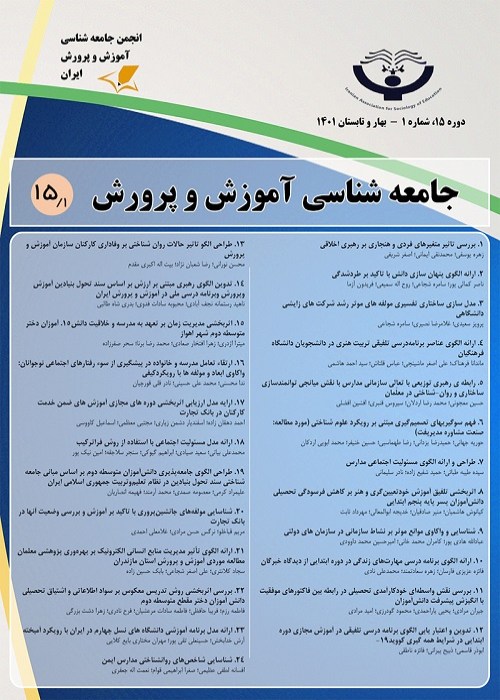Modeling Factors Affecting Organizational Envy in Farhangian University Staff (Case Study: Northwestern Provinces of The Country)
Organizational envy, due to its more or less hidden nature, may be ignored in organizations, but this feeling is one of the negative consequences of social life and imposes heavy costs on the organization and society. The aim of this study was to model the factors affecting organizational envy among Farhangian University staff.
In terms of purpose, this study was part of applied research in which an exploratory sequential mixed methods research design was used. The statistical population in the qualitative section were specialists and experts in the field of educational sciences and organizational behavior management of Farhangian University in the northwestern provinces of the country in 2020-2021. The research sample was selected based on the principle of theoretical saturation; 24 people were selected using criterion-based purposive sampling. In the quantitative part, the statistical population include all staff and faculty members of Farhangian University in the northwestern provinces of the country in 2020-2021; that is, 287 people of which 130 subjects were selected using the Cochran's formula and stratified sampling method. Optimal assignment based on degree and gender were selected as the research sample. The instrument used in the qualitative stage was a semi-structured interview and in the quantitative part, a researcher-made questionnaire was used. The validity of the research findings in the qualitative part was ensured by the methods of review by members, peer review, and participatory research. Also, in order to measure the reliability of the codings, two methods of reliability of retest (stability index) and thematic agreement were employed, the results of which were 84% and 82%, respectively. In the quantitative stage, the content and face validity of the questionnaire were confirmed by the professors and its reliability was confirmed by Cronbach's alpha at 0.89. To analyze the data in the qualitative part, the content analysis method was used in MAXQDA 2018 software and in the quantitative part, structural equation modeling and confirmatory factor analysis in Smart PLS2 software were used.
- حق عضویت دریافتی صرف حمایت از نشریات عضو و نگهداری، تکمیل و توسعه مگیران میشود.
- پرداخت حق اشتراک و دانلود مقالات اجازه بازنشر آن در سایر رسانههای چاپی و دیجیتال را به کاربر نمیدهد.



